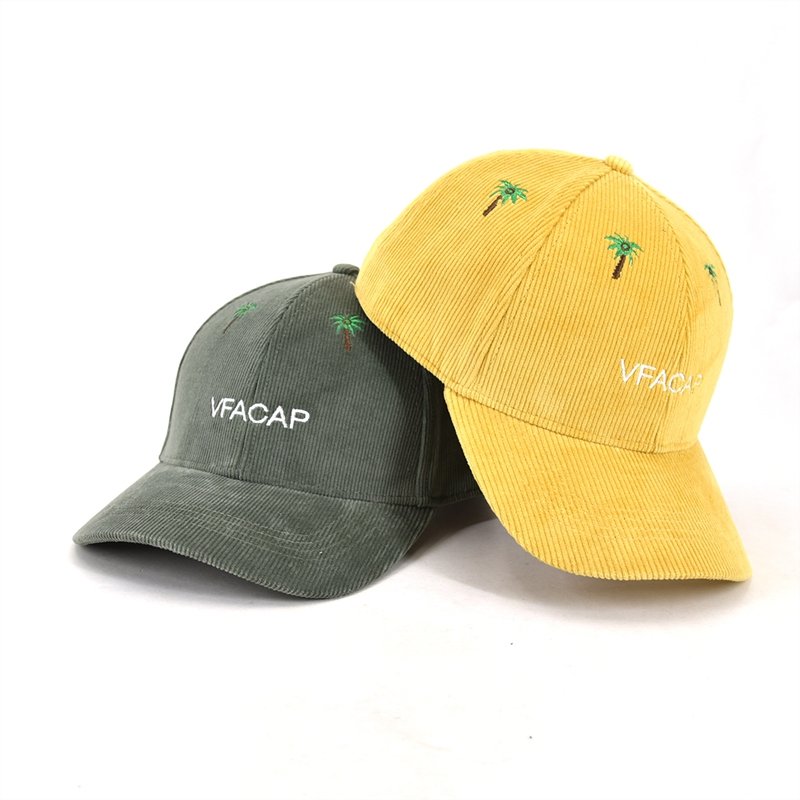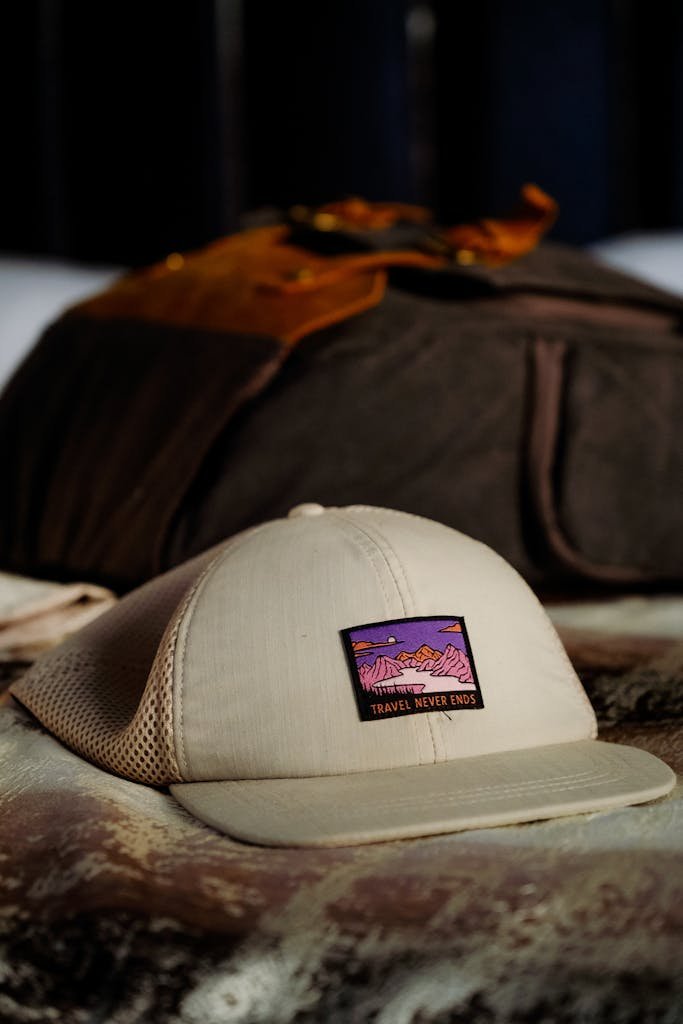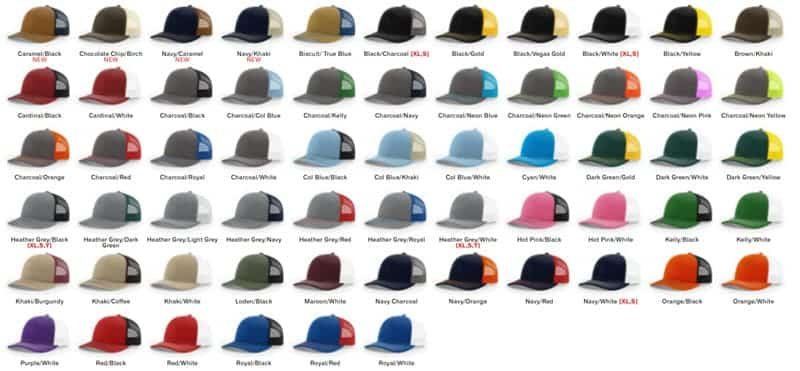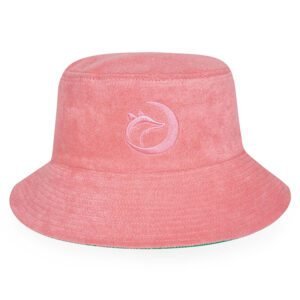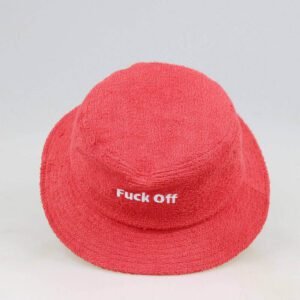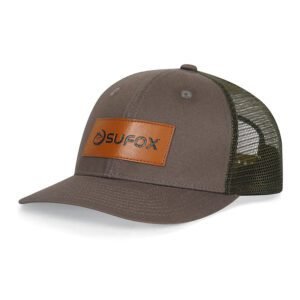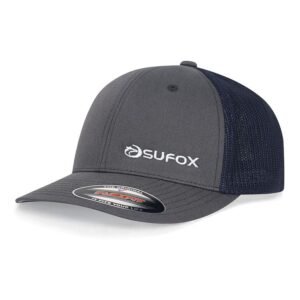Custom hats are more than just accessories—they’re a powerful tool for expressing brand identity, promoting events, and building team unity. Whether you’re launching a streetwear line, planning a corporate giveaway, or creating merch for your startup, how you apply your design matters. One of the most common questions we hear at Sumkcaps is: “Should I choose embroidery or patches for my custom hats?” It’s a decision that affects not only the look and feel of your product but also durability, cost, and long-term brand perception. In this article, we break down the pros and cons of embroidery and patches, explore their ideal use cases, and help you choose the method that aligns with your vision, budget, and marketing goals. Let’s dive into the details that make the difference.
Custom Hat Embroidery
What Is Embroidery and Where Is It Commonly Applied?
Embroidery is the process of stitching thread directly onto the surface of a hat to create a raised, textured design. This method has been a staple in hat customization for decades and is known for its premium and professional look. Embroidery is most commonly applied to the front panel of a hat—particularly on structured caps like baseball hats, dad hats, and snapbacks. However, it can also be stitched onto the side panels, back strap, or brim, depending on your brand’s style and the design complexity.
This technique is ideal for logos, monograms, and minimalistic iconography, where crisp lines and subtle texture enhance brand recognition.
Einstellbare Größe benutzerdefinierte 6 Panel Stickerei Baseball-Kappe
Großhandel benutzerdefinierte Herstellung China Kappen Stickerei einstellbar Cord Baseballmützen
Techniques and the Embroidery Process Explained
The embroidery process for custom hats typically involves several technical steps:
- Digitization: Your logo or artwork is converted into a digital embroidery file that guides the machine on how to stitch—defining thread paths, densities, and stitch types.
- Thread Selection: Choose from hundreds of thread colors, including matte, metallic, and neon tones to match your brand palette.
- Machine Embroidery: Using industrial multi-needle machines, your design is stitched with precise alignment and tension control.
- Finishing Touches: Loose threads are trimmed, and the hat undergoes quality inspection to ensure clean lines and durability.
Embroidery can support several advanced techniques, such as:
- 3D-Bausch-Stickerei: Creates raised, dimensional lettering—popular in streetwear caps.
- Flat Stitching: Sleek and smooth, ideal for clean corporate designs.
- Applizierung: Combines fabric with embroidery for a layered look.
Advantages of Embroidery for Custom Hats
Choosing embroidery as your customization method offers several strategic benefits:
- Long-Lasting Durability: Embroidered logos are tightly stitched and resistant to fading, cracking, or peeling—making them perfect for hats worn in active or outdoor settings.
- High-End Look: Embroidery adds depth and texture, delivering a premium appearance that resonates with both corporate and fashion-forward audiences.
- Color Consistency: Thread colors don’t fade easily under sunlight or washing, ensuring that your brand maintains its visual integrity over time.
- Tactile Branding: The raised feel of embroidery adds physical texture that enhances user experience and perceived quality.

Limitations of Embroidery in Custom Hat Design
While embroidery is a powerful decoration method, it’s not without trade-offs:
- Design Restrictions: Complex gradients, photo-like images, or fine text may not translate well into stitched designs. The more intricate the artwork, the harder it is to reproduce accurately with thread.
- Higher Unit Cost for Small Orders: Embroidery setup (digitizing and machine configuration) can make low-quantity runs more expensive compared to print or patches.
- Not Ideal for All Fabrics: Hats made from very soft, flexible, or mesh materials (e.g., unstructured caps or foam truckers) may warp or pucker under tight stitching, reducing quality.
- Longer Production Time: Compared to heat transfer or sublimation, embroidery typically requires more time for setup and stitching, especially for bulk orders.
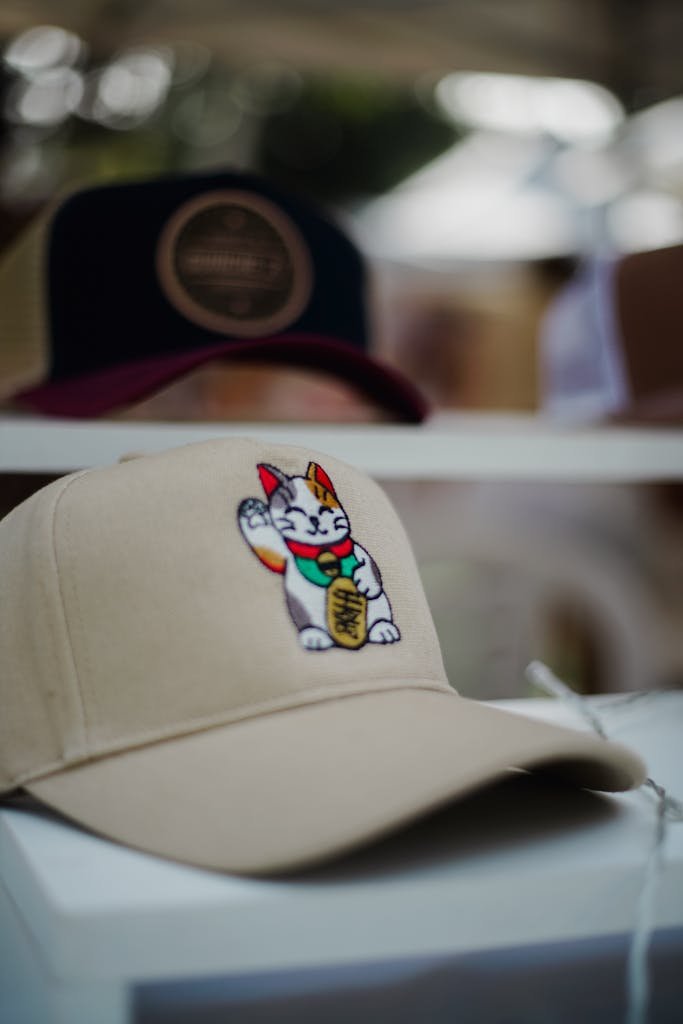
Custom Hat Patches
What Are Patches and Common Types?
Patches are pre-made designs—usually logos, artwork, or branding elements—that are applied to the surface of a hat rather than being stitched directly into the fabric like embroidery. They add texture, color, and depth, and are commonly used in everything from sportswear to streetwear to promotional merchandise.
Here are the most common types of patches used in custom hats:
- Embroidered Patches: Traditional raised-thread look that mimics embroidery but allows for off-hat production and easier mass application.
- Woven Patches: Made with thinner threads than embroidered patches, these allow for more intricate details and small text.
- Sublimated (Printed) Patches: Use heat to transfer high-resolution graphics—ideal for colorful or photo-realistic designs.
- PVC (Rubber) Patches: Flexible, waterproof, and durable—often used on outdoor or tactical hats.
- Leather Patches: Rugged and timeless, they bring a rustic or premium aesthetic to beanies and trucker hats.
- Chenille Patches: Fuzzy and raised, typically seen in varsity or vintage fashion collections.
Each patch type offers a unique look and material feel, giving brands the flexibility to express personality, style, or seasonal variation.
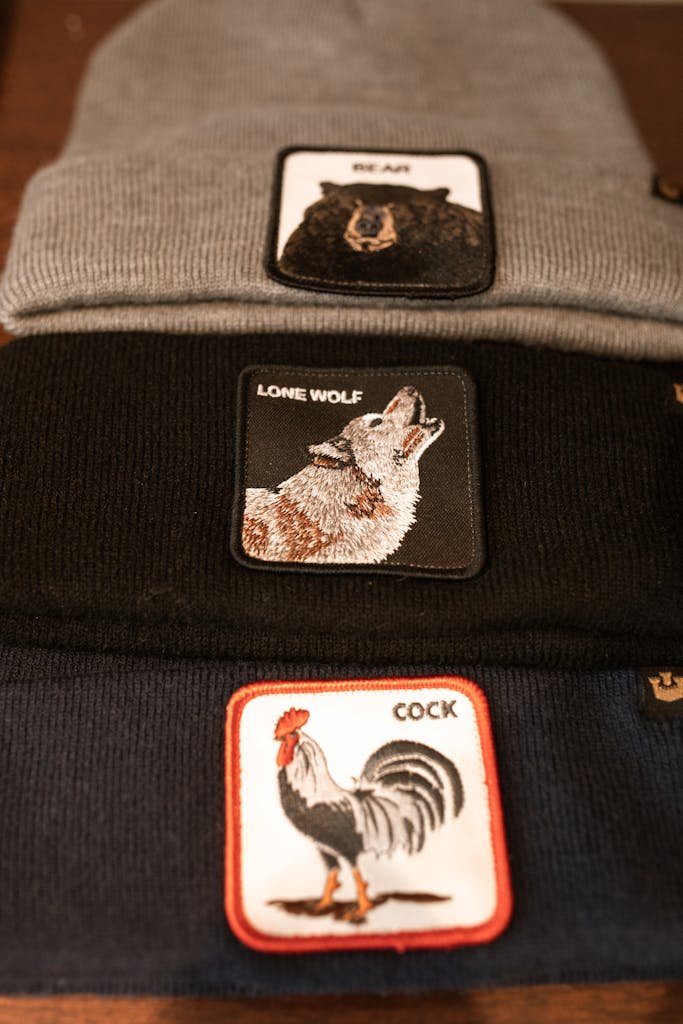
Patch Application Methods Explained
How patches are attached to hats plays a critical role in durability and finish. The most common patch application techniques include:
- Sew-On Patches: Stitched directly into the hat fabric for a permanent, hand-crafted look. Ideal for canvas and structured caps.
- Heat-Pressed Patches (Iron-On): Applied using a heat press to melt adhesive backing and bond the patch to the hat—faster and cost-effective for high-volume runs.
- Velcro Patches: Attach using hook-and-loop systems, allowing users to swap out designs—popular for tactical gear and uniforms.
- Adhesive or Peel-and-Stick: Quick and temporary—used for events, giveaways, or novelty campaigns.
Choosing the right patch and attachment method depends on your intended hat use, audience, and brand positioning.
Benefits of Using Patches for Custom Hats
Patches offer a number of unique benefits that make them an excellent choice for many customization projects:
- Design Complexity: Unlike embroidery, patches allow for multi-color gradients, fine text, and photo-realistic images.
- Texture & Contrast: Patches create a layered look that adds visual interest and enhances brand recognition.
- Vielseitigkeit: The same patch design can be applied across multiple products—hats, bags, jackets—without requiring new production.
- Scalability: Once created, patches can be mass-applied to a wide variety of hat styles, streamlining fulfillment.
- Custom Shapes & Materials: Patches can be die-cut into logos or unique shapes, and made from leather, rubber, twill, and more.
For lifestyle brands, promotional campaigns, and youth-focused collections, patches offer a creative edge and allow for seasonal and style flexibility.
Drawbacks of Patch Customization
Despite their advantages, patches aren’t always the best fit for every brand or product. Here are a few potential drawbacks:
- Variable Durability: Heat-applied or adhesive patches may begin to peel or crack over time, especially after repeated washing or exposure to heat.
- Bulk & Rigidity: Some patch types (like PVC or thick embroidery) can add weight or stiffness to the hat, which may impact comfort or fit.
- Longer Lead Times: Designing and producing custom patches involves additional production steps that may slightly extend turnaround times.
- Perceived as Less Premium: For corporate or high-end fashion, direct embroidery is sometimes viewed as more professional and clean than patchwork.
Embroidery vs Patch: Side-by-Side Comparison
To help you make an informed decision, here is a detailed comparison of embroidery and patches for custom hats:
| Criteria | Stickerei | Patches |
|---|---|---|
| Visual Style | Clean, stitched-in texture; integrated look | Raised, layered look; adds visual depth |
| Design Detail | Moderate detail; hard to do gradients or small text | High detail possible with woven/sublimated patches |
| Farbpalette | Limited to thread colors; no gradients | Unlimited colors with sublimation; vivid gradients |
| Dauerhaftigkeit | Extremely durable; long-lasting stitching | Varies by type (PVC, leather, embroidered, etc.) |
| Komfort | Lighter and more flexible | May be heavier or stiffer, depending on material |
| Cost Efficiency | Cost-effective for simple designs and bulk orders | Cost varies; additional setup for patch production |
| Application Process | Stitched directly into the hat | Applied by sewing, heat press, or adhesive |
| Brand Perception | Perceived as premium and professional | Viewed as trendy, creative, and youthful |
| Best Use Cases | Corporate merch, uniforms, luxury branding | Streetwear, promotions, outdoor gear, limited editions |

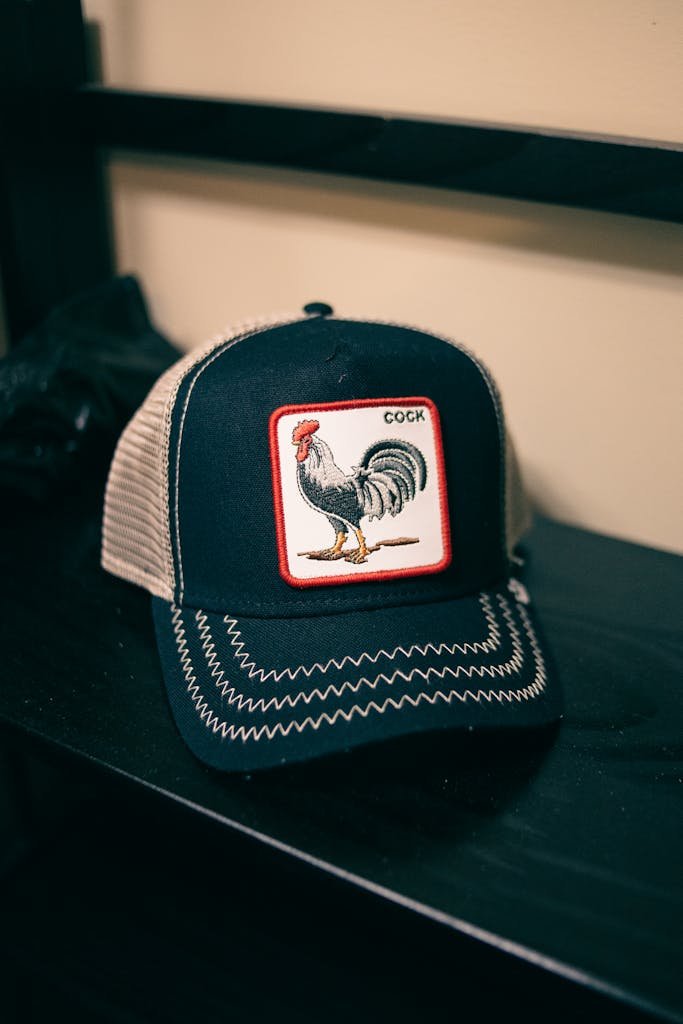
Choosing Between Embroidery and Patches
Factors to Consider When Making a Choice
Selecting between embroidery and patches comes down to your brand identity, design complexity, target audienceund production goals. Ask yourself:
- What kind of aesthetic are you going for?
Embroidery feels traditional and timeless. Patches lean bold and expressive. - Is your logo design complex?
Small text and fine detail may not translate well with embroidery, but work well with woven or sublimated patches. - Do you need flexibility?
Patches can be reused across different product lines and offer quick visual variations. - What’s your budget and turnaround time?
Embroidery is often faster and cost-efficient for simpler designs. Patches may involve longer production timelines. - How will the hat be used?
For outdoor wear or tactical gear, PVC patches are ideal. For premium uniforms, embroidery is often preferred.
Examples and Case Studies
To illustrate the difference, here are two typical use cases from our clients:
- Example 1: Embroidered Hat for Corporate Branding
A tech startup ordered navy blue baseball caps with directly embroidered logos for their trade show. The clean, professional look aligned with their brand’s image and the hats held up well after repeated use. - Example 2: PVC Patch Hat for an Outdoor Apparel Brand
An outdoor lifestyle brand used custom rubber patches on trucker hats for a limited-edition drop. The patches gave a bold, waterproof finish and were easily distinguishable on shelves.
These real-world applications show that neither method is better—just better suited to your specific goals.
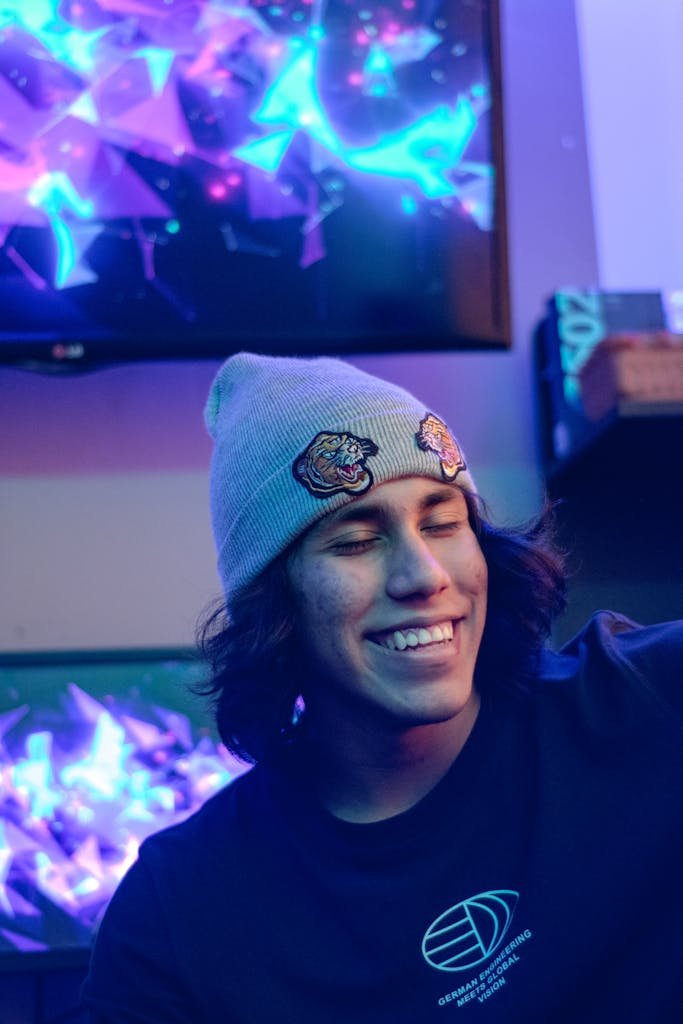

Professional Recommendations from Sumkcaps
Unter Sumkcaps, we specialize in delivering high-quality custom hats tailored to your exact needs. Whether you’re leaning toward premium embroidery, custom-designed patches, or need full OEM/ODM hat manufacturing support, we’ve got you covered.
We recommend:
- Requesting a sample or prototype before mass production to compare both techniques side by side.
- Consulting with our design experts, who can help you translate your logo into an ideal format for hats.
- Leveraging our 20+ years of manufacturing experience, advanced equipment, and global logistics network for fast, dependable delivery.
Our process includes:
- Free design mockups
- Expert digitizing and patch-making
- Flexible MOQs for startups and large orders alike
Ready to bring your hat vision to life? Kontakt today for a quote or a sample request.
Schlussfolgerung
Embroidery and patches each offer unique advantages when it comes to custom hats. Embroidery excels in professional and permanent applications, while patches provide creative flexibility and a bold, modern aesthetic. Your best choice depends on your brand’s personality, design complexity, and budget.
Still unsure? Let Sumkcaps help guide you. With over two decades of experience in custom hat production, we’re here to ensure you make the right decision—with style, precision, and impact.
FAQ
Yes, embroidery can support multiple thread colors—typically up to 12—though overly complex gradients or photo-like effects may be limited.
Absolutely! Patches can be die-cut into almost any shape to match your logo or design precisely.
For quick-turn, budget-friendly promotional hats, embroidery is often better. But patches stand out more for bold branding and limited-edition promos.
Yes, most patch hats are washable—especially if the patches are sewn on. However, avoid high heat drying or harsh detergents to extend lifespan.
Definitely! At Sumkcaps, we can provide both embroidered and patch samples of your logo so you can compare and decide what looks best.
